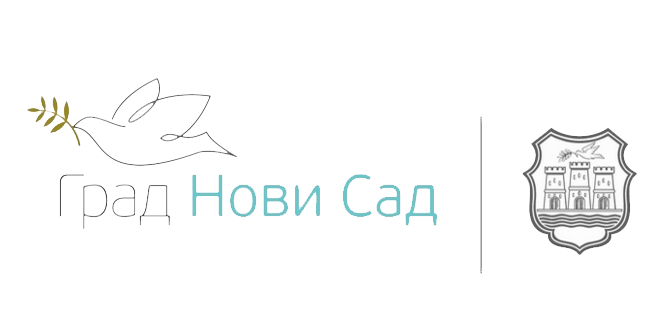
About Novi Sad
• Country: Serbia
• Province: Vojvodina
• District: South Bačka
Area
• Urban 129.4 km2
• City proper 106.2 km2
• Administrative 702.7 km2
Position
Novi Sad is the second largest city in Serbia and the capital of the autonomous province of Vojvodina. It is located in the southern portion of the Pannonian Plain on the border of the Bačka and Srem geographical regions. Lying on the banks of the Danube river, the city faces the northern slopes of Fruška Gora.
Population
Novi Sad is the second largest city in Serbia (after Belgrade), and the largest city in Vojvodina. Since its founding, the population of the city has been constantly increasing. Novi Sad’s administrative city limits hold 341,625 inhabitants.
History
Novi Sad was founded in 1694 when Serb merchants formed a colony across the Danube from the Petrovaradin Fortress, a strategic Habsburg military post. In the following centuries, it transformed into an important trading and manufacturing centre as well as a centre of Serbian culture, earning it the nickname Serbian Athens. Today, along with the Serbian capital city of Belgrade, Novi Sad is an industrial and financial centre important to the Serbian economy.
Role of Danube (City-water relationship)
The city lies on the meander of the river Danube, which is only 350 meters wide beneath the marking stones of Petrovaradin. A section of the Danube-Tisza-Danube Canal marks the northern edge of the wider city centre. The main part of the city lies on the left bank of the Danube in the region of Bačka, while the smaller settlements of Petrovaradin and Sremska Kamenica lie on the right bank, in the region of Srem (Syrmia).
Local Heritage
•The Name of Mary Church
•Petrovaradin Clock Tower
•The Our Lady of Snow ecumenic Church
•Town Hall
•Petrovaradin Fortress
•Building of the Matica srpska
•Liberty Square
•Bishop Palace
•Novi Sad Synagogue
Introduction
We wanted to address persons with reduced mobility. The indicators we wanted to focus on were unreachable obstacles where, unfortunately we expected to meet with lots of unreachable places for the disabled persons. The main aim was to raise awareness for the actual problems in the city of Novi Sad for people with limited mobility. The location we selected were city fortress and city centre, which both have major touristic and historical aspects. These localities possess numerous public objects and spaces with high efficiency, narrow streets and focus mainly on pedestrians. As predicted, we expected to identify irregularly parked cars, unreachable transitions between different pavements, public stairs without proper ramps. The tracks are the length of maximum 2.5 km and the methods we used to comprehend with the problems are tracking, photos and notes.
General information
An important topic that is always relevant is the accessibility of public areas and services. In order for all citizens to participate equally in all spheres of city life, they must have access to facilities such as public institutions, municipal buildings, social work center, health centers … In some facilities, accessibility is partially provided, where the ramp provided at the entrance is at a great slope or there is the next obstacle behind it. The biggest problem is that interventions of this type are implemented to fulfill the form, and not to facilitate access for people with disabilities.
Everyone should be able to enter buildings or public areas, without anyone’s help, with ease and without feeling ashamed.

Mandatory elements of accessibility are for:
1. overcoming height differences
2. movement – residential and commercial buildings and facilities for public use
3. roads
Targeted places:

Route number 1 and 2 – Petrovaradin Fortress – a historical site, the main tourist attraction in the city. We walked around the upper and lower fortress and noticed many irregularities. For people with disabilities, this tourist place is completely inaccessible without assistance.
Route number 3 – City center – Every tourist and resident of the city always comes to the city center, so these spaces must be adapted to everyone! We have noticed many minor irregularities on this route, but there are still some, and it is also impossible for a person with a disability to do everything himself.
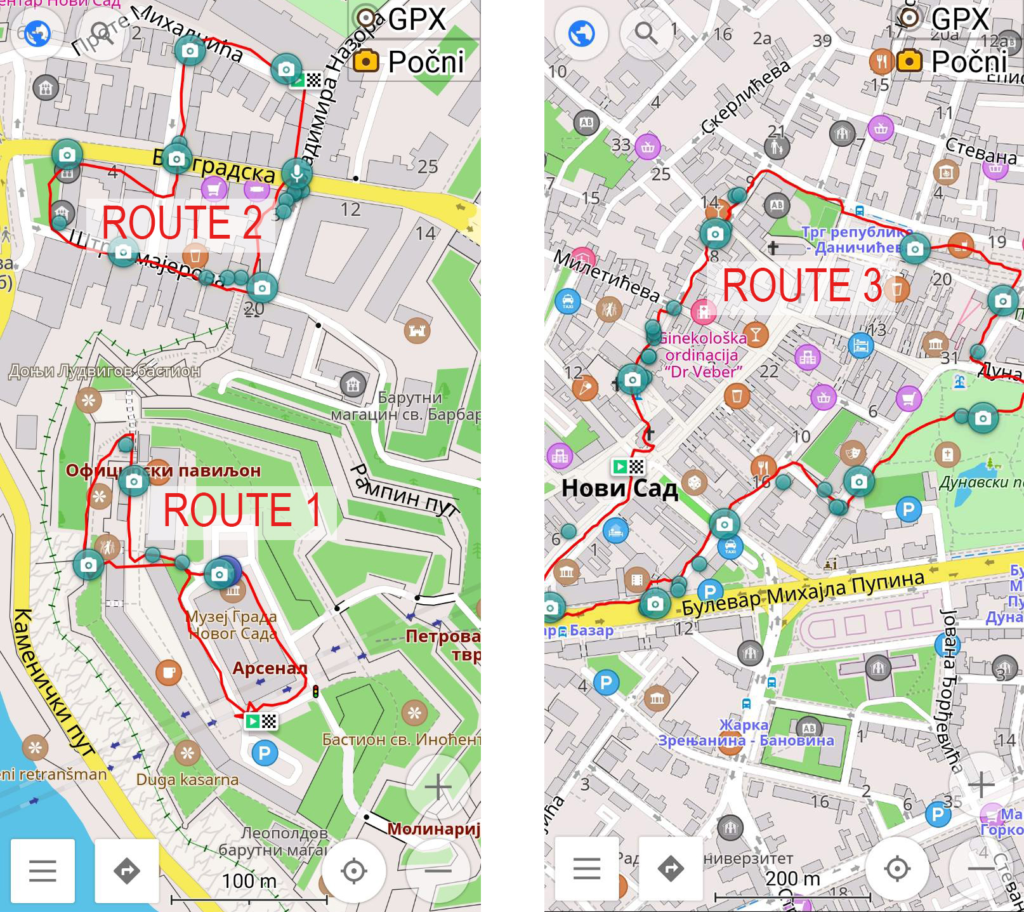
Increasing the mobility of citizens is not only the establishment of relations in space and time, but it is a very important prerequisite for achieving social contact and independence of people. The integration of all citizens (regardless of their different physical, mental, and/or intellectual characteristics, abilities, and capabilities) in everyday life depends on adequate planning of the environment to increase their mobility and independence.
The complexity and multiplicity of problems faced by citizens with difficult movement and/or communication are particularly pronounced in public buildings, residential areas, and areas of intensive pedestrian and motor traffic (public space and public transport). Approaches to public buildings, entrances to collective housing buildings, inaccessible apartments, underground and above-ground stairs and passages/corridors, inadequately placed urban furniture, inaccessibility of various attractions in the city, quality, and type of curtains and profiles of pedestrian flows, shape and size of pedestrian curbs, improperly parked vehicles, difficult crossing of streets due to a large number of vehicles and/or inadequately signaled intersections, and many other obstacles that can be found in the public exterior, make life difficult for a large number of citizens on a daily basis.

In the last ten years, in our larger cities, and mainly in their centers, the needs of these users, especially people with disabilities, have been taken into account to some extent. In most cases, unfortunately, the interventions are limited to improving access at pedestrian crossings and introducing sound signals for the visually disabled at signalized intersections. It is certain that the causes of such a situation largely lie in unregulated regulations, inadequate and unsystematic planning and design, both facilities in general and elements of the street network, in accordance with the needs of all citizens.
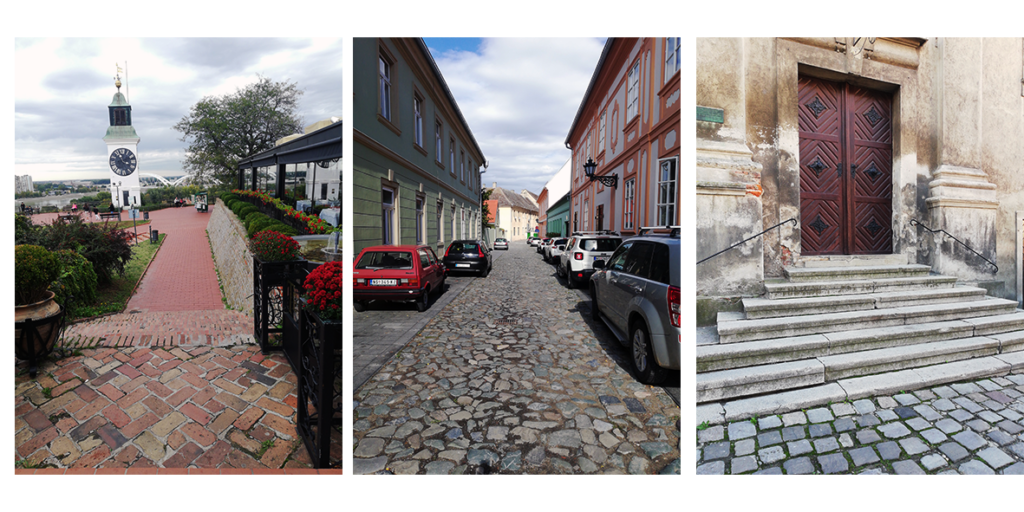
Goals:
1. Raising awareness of the need for comprehensive accessibility
2. Initiating innovative solutions through a more accessible and sustainable environment
3. Good practice and design guidance on comprehensive accessibility in order to enable the widest range of users to use independent public and service spaces independently and undisturbed
Tracking map
Links
About us
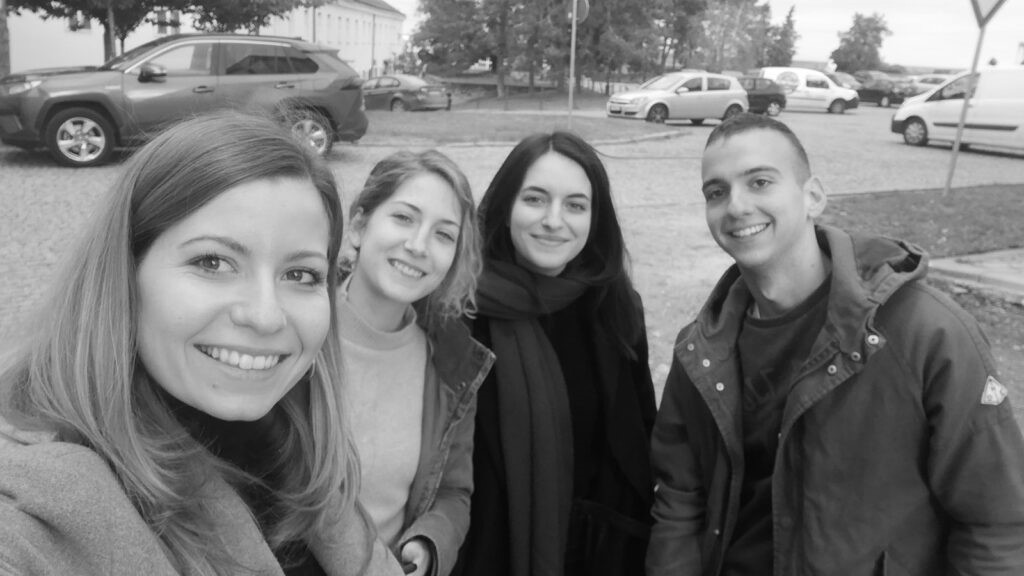
| University | University of Novi Sad |
| Topic | Accessibility |
| Group members | Olivera Markovic, Anastasija Radovanovic, Marko Mihajlovic, Petra Jovanovic |


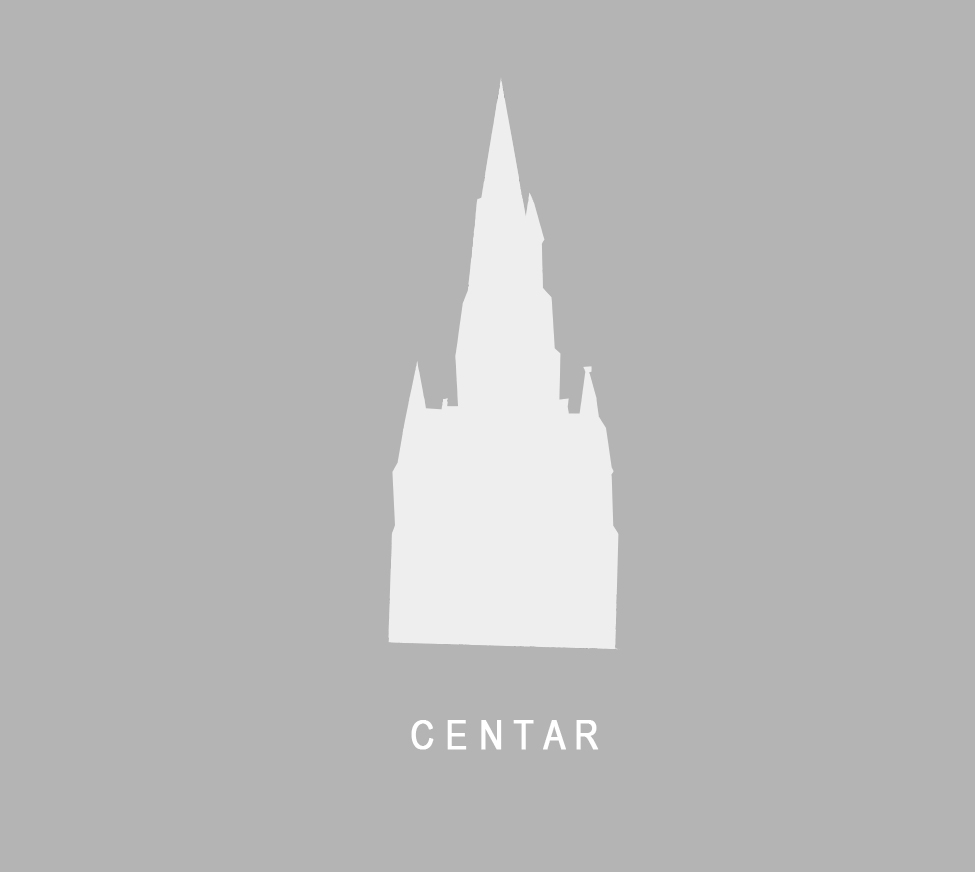
One reply on “Novi Sad Accessibility”
great!